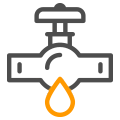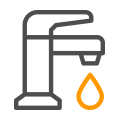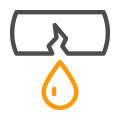Are you looking for a plumber in Croydon, NSW? Or encountered an emergency plumbing issue? Get in touch with Dial Up Plumbing Services for a seamless plumbing service experience.
When do you need a plumber?
Plumbers are experts when it comes to unblocking drains, fixing pipes, detecting plumbing leaks, unclogging sink, hot water installation, and many more. A licensed gas plumber can even help you with gas installation.
We are a licensed plumbing service provider helping you with blocked drain repairs, pipe relining, leaking tap fixes, pipe installations, and all kinds of other plumbing installations and repairs.
Not sure if a plumber can help you? We would be more than happy to help you if you give us a call at (02) 8999 6125.
A plumbing service trusted by residents in Croydon
Dial Up Plumbing services has delivered top-notch plumbing service to the residents of Croydon for over last 20 years.
Our plumbing service Croydon comes with 10 years of licensed plumbing experience and is different compared to other local plumbing companies. Choosing the right plumbing company is very vital, and can make a difference of quality and cost.
Our Croydon plumbers can attend you for a same-day service at your commercial or residential property solving any kind of plumbing issue at an affordable rate.
Our licensed plumbers are trained and experienced when it comes to fixing blocked drains, repairing showers, sealing leaking pipes, and pipe relining as well. Specially, residential homeowners in Croydon encounter a lot of problems in the form of plumbing emergencies.
We can attend to emergency plumbing situations
Whether it is 2 AM in the morning or 10 PM at night, with Sydney’s most trusted team of licensed plumbers in Croydon you don’t need to worry about things. Pronto!
Dial Up Plumbing is just a dial away from you. Contact us today to get started with your plumbing job.

Local Plumber Croydon, Always Near You
Our plumbers have a reputation for being reliable and available at times when you need us. The team of Dial Up Plumbing Services is comprised of plumbing experts coming from different parts of Sydney and can come to you quickly as possible in terms of any plumbing emergency.
No job is too big or small for us. We’ve encountered a wide variety of jobs in the past, from slow draining pipes and gurgling noises to complete blockages, overflowing toilets, and tree roots causing damage to residents’ homes!
Some common plumbing problems we respond to
As plumbing experts, we can provide you with a quote for any problem and recommend permanent solutions to ensure that the same issue never occurs again. Some of the plumbing problems that we often get inquiries for are;
🟨 My toilet is not flushing, toilet water not filling, blocked toilets
🟨 Tree roots blocking the pipes, blocked drains, storm water blocked drain
🟨 Leaking taps, burst taps, shower repairs, and leaking showers
🟨 Hot water system not working, cold water coming from taps and more
Whatever the plumbing problem is, the solution is just a dial away: Contact Dial Up Plumbing today!

We Specialise in Fixing Blocked Drains
When it comes to unblocking drains in Croydon, our drain plumbers are the best. We unblock sinks, toilets, sewer, and drainage with perfection.
Learn more about Blocked Drains
Croydon here.
Our cutting edge technology which includes using the best drain clearing chemicals, CCTV Inspection technology, water jetting equipment’s ensures that every drain clearing work we do is carried out with perfection.
Are you after permanent no-dig blocked drain solutions? Dial Up Plumbing is also regarded as the best team of licensed drain experts when it comes to providing top-notch pipe relining services in Sydney.
Get in touch with Plumbing Experts in Croydon
Dial Up Plumbing is a Croydon’s trusted plumber for a reason. Our team is prominent when it comes to responding to plumbing emergencies. Looking for 24 hour emergency plumber in Croydon?
Well, with Dial-Up Plumbing Services, you can rest assured on your couch. Our team is equipped with all the plumbing tools and machinery required to fix a plumbing problem at any time of the day. Why look for someone else when an award-winning local team of licensed plumbers is available to you at an affordable price? We have recently provided services in the following locations; Plumber Burwood, Plumber Henley, and Plumber Punchbowl.
FAQs
The services provides by Dial Up Plumbing comes with a labour warranty.* We also provide various discounts on plumbing and are known for quality workmanship in your local area. Our name is synonymous to quality service, affordable prices, and best customer services.
We provide all kinds of residential and commercial plumbing solutions in Croydon. Our range of plumbing services includes pipe relining, blocked drain repairs, shower repairs, bathroom installations, hot water replacements and many more. In fact, our commercial plumbers in Croydon are regarded as the best service providers by the local residents.
Hiring a professional plumber does not cost much when you get in touch with the right plumbing company. In fact, going for cheap plumbing prices and saving your plumbing cost for now is sure to bring more expenses as seen in many cases.
The cost of hiring a plumber varies on a lot of things. In most cases we need to come to your place and inspect the situation in order to provide the right cost structure. However, we can always give you a rough idea on costing if you get in touch with us.
Croydon is a suburb in the Inner West of Sydney, in the state of New South Wales, Australia. It is located 9 kilometres (5.6 mi) west of the Sydney central business district. Croydon is split between the two local government areas of Municipality of Burwood and the Inner West Council.
The suburb is nestled between the commercial centres of Ashfield and Burwood. It is bounded by Parramatta Road to the north, Iron Cove Creek to the east, Arthur Street to the south and a number of different streets to the west. To the north are Kings and Canada Bays on the closest reach of the Parramatta River, to the northwest is Concord Hospital and the Olympic Games complex at Homebush Bay. To the south is Canterbury Racecourse. The suburb shares its name with Croydon, a large district and borough in the south of London in the United Kingdom.
The traditional owners of the land on which Croydon is situated are the Wangal people of the Eora nation.
Prior to the arrival of Europeans, the area now known as Croydon was part of the land which the Wangal people lived. Their focus of tribal land was believed to be centred on Concord and stretched east to the swampland of Long Cove Creek. The land was heavily wooded at the time with tall eucalypts, blackbutts and turpentines covering the higher ground and mangroves, swamp oaks and swamp mahoganies in the lower swampy ground of Iron Cove Creek. The diet of the Wangal was primarily fish so they spent most of their time living near the shores of the Parramatta River and fishing in canoes. The land away from the river shores provided fruits, berries and edible plants as well as possums and kangaroos, which were killed both for food and their skins.
The arrival of the First Fleet in 1788 and the start of modern Australia had, as one could expect, an influence on the people living in the area. One of their leaders, Bennelong, befriended the first governor of New South Wales, Arthur Phillip, and was taken by him to England.
After establishing the colony at Sydney Cove in early 1788, a second settlement was established at Rose Hill (now called Parramatta) later that same year to establish farms to feed the people. Within a year or so, a rough land route had been established between the two settlements, traversing through the territory of the Cadigal, Wangal and Burramattagal people. This rough track later became the main artery of the expanding Greater Sydney and, as the northern boundary of what is now Croydon, influenced modern settlement in the area.
Governor Phillip showed great reluctance to grant large amounts of land to his colonists, restricting land grants to the towns and people actively planning to farm the land. After his return to England in 1792, acting governor Major Francis Grose and his successor Captain William Paterson pursued the opposite policy granting large swathes of land to their friends prior to the arrival of the second official governor John Hunter in 1795.
The first land grant in the Croydon area was to Captain John Townson in April 1793 who received 100 acres (0.4 km) on Parramatta Road stretching west from Iron Cove Creek and south to what is now Queen Street. Further grants were made in 1794 to: Private J Eades (25 acres on Parramatta Road to the west of Townson’s holding); James Brackenrig (30 acres on the other side of Eades’s land); Augustus Alt, the first surveyor-general of NSW, (100 acres stretching south from Townson’s land to roughly what is now Thomas Street); and Sarah Nelson (15 acres west of the southern corner of Alt’s land in the area now known as Malvern Hill). Alt was the first to take up residence on his land, naming it ‘Hermitage Farm’. However, his house was burnt down by a group of indigenous people (possibly led by Pemulwuy) in 1797 and he didn’t return to Croydon, establishing himself in neighbouring Ashfield, and selling his property to John Palmer.
By 1820 a large part of the area had been subsumed by Joseph Underwood’s large ‘Ashfield Park Estate’. This property remained largely intact for more than 40 years, until it was subdivided into large blocks after the death of Elizabeth Underwood in 1858. By this time its proximity to the railway made it a desirable area (the station was originally called Fivedock). One of these subdivisions was the ‘Highbury Estate’, on part of which Anthony Hordern, son of the founder of the great retail firm, Anthony Hordern & Sons, eventually built his house ‘Shubra Hall’, just beyond the west border of Ashfield. It later became part of the Presbyterian Ladies’ College, the current boundaries of which give an idea of the extent of the Hordern property. The College, including Shubra Hall, the main school building and the Meta Street entrance gates, is now listed on the Register of the National Estate.
From around 1800 to 1860, development in the area was slow with the forests gradually being cleared for orchards and grazing land. The area was a haunt of bushrangers in the 1820s with two major thoroughfares, Parramatta Road to the north and Liverpool Road to the south providing regular opportunities for holdups.
In 1855, the Sydney-Parramatta railway was built through the area which led to a housing boom around the stations at Ashfield and Burwood. This in turn led to local governments forming in the two areas with the land divided roughly equidistant between the two centres. In 1874 a new station was built on the boundary of the two areas and was named Five Dock after another settlement to the north. Because Five Dock was actually a long way north some confusion ensued and Ashfield Council renamed the station in 1876 to Croydon after the suburb in London. The suburb remains divided between the two neighbouring councils to this day.
The first developments were on the northern side of the station around Edwin and Elizabeth Streets. Anthony Hordern built his grand home ‘Shubra Hall’ in 1869 while many of the shops along Edwin Street North were built in the 1880s. Many houses in the areas surrounding Edwin Street North and Elizabeth St are also of the Victorian style popular in the 1880s and 90s. The 1880s and 90s also saw the establishment of the suburbs first schools with Croydon Public School in 1884, and the Presbyterian Ladies’ College relocating from Ashfield in 1891.
The southern side of Croydon remained largely undeveloped until the early 20th century. The Malvern Hill Estate was subdivided in 1909 and designed as a model suburb like Haberfield with wide tree-lined streets and houses built in the then-modern Federation style (a variation of Arts and crafts). Part of the development was the Strand shopping strip, which has survived intact to this day and is now heritage listed in its entirety.
Since World War I, little has changed in Croydon generally. While there have been some blocks of flats built in that time, they account for only around 10% of dwellings in Croydon and many of them are art deco blocks from the 1930s which fit in with the general heritage feel of the area.
Croydon has a number of heritage-listed sites, including:
Croydon’s principal commercial area is located around the railway station. The Strand, south of the railway line, is the primary commercial strip. It features a number of commercial properties, most of which contain residential units above them. A TAB, two real estate agencies, two grocery stores and various restaurants, cafés and bakeries are among the shops on The Strand. The older Edwin Street precinct, north of the line, consists mainly of specialist businesses such as an accounting firm, engineering firm, and printing shop. Some retailers on the southern side of Parramatta Road also fall just inside Croydon’s boundaries.
From 1893 to 1994, the Western Suburbs Hospital was situated on the corner of Liverpool Road and Brighton Street. After remaining unoccupied for nearly 10 years, it was replaced in the early 2000s with a community health centre and two aged care facilities: Holy Spirit Croydon and The Brighton. Both of these facilities are operated by Catholic Health Australia, and each facility houses over 100 residents.
The only other health facilities in Croydon are both situated on The Strand: a chiropractic clinic and Croydon Medical Centre, the latter situated next to the local pharmacy.
Croydon railway station is served by the Inner West & Leppington Line of the Sydney Trains network. Like most stations on the Inner West section of the line, it is served by all-stations services every fifteen minutes in both directions: east to the city and west to Homebush or Parramatta.
Seven bus services pass through Croydon:
Croydon is sandwiched between two major roads: Parramatta Road and Liverpool Road. Within Croydon itself, there is only one road bridge (Meta St bridge) over the railway line which connects the north and south parts of the suburb.
Up until 1948, Croydon and neighbouring Croydon Park were also serviced by electric tram services running between Ashfield Station and the respective terminuses at Mortlake and Cabarita Park. These were subsequently replaced by routes 464 and 466.
Croydon has four schools: two primary and two secondary. The suburb’s oldest school is Croydon Public School, a primary, co-educational public school, established in 1883. Over 700 students currently attend the school, which is located on Young Street. The suburb’s other primary school is Holy Innocents Catholic Primary School, a Roman Catholic, co-educational primary school, established in 1924. It is a much smaller school than Croydon Public School, with a total enrolment of around 200 students. Holy Innocents is located on Queen Street opposite Burwood Girls High School which, despite its name and proximity to Burwood, is in fact situated within the boundaries of Croydon. Currently about 1200 students attend the secondary public school for girls, which was established in 1929.
Another school for girls is Presbyterian Ladies’ College, Sydney (PLC Sydney), an independent, Presbyterian, R-12, day and boarding school. The school was established in 1888 but did not move to its current Croydon location until 1891. Around 1150 girls currently attend the school. PLC Sydney is similar to the nearby Burwood Girls High School in that the vast majority of girls from both of these schools are not residents of Croydon, but instead travel to school from surrounding suburbs.
Croydon features many of the inner west’s most sought-after addresses due to its grand homes, larger blocks and family friendly streetscapes. As of 2011, the majority of dwellings were separate houses (63.6%). Croydon is a quiet village-like suburb with mostly detached housing built in the early part of the 20th century in what is known as Federation Bungalow or California Bungalow styles. The suburb caters for first-home buyers, while the wealthy may also find homes in the Malvern Hill Estate, a well-established pocket of prestigious homes that rarely come on the market and sell for more than $900,000. As of January 2016, the median house price of Croydon stood at $1,435,000.
The Malvern Hill area of Croydon was designed as a model suburb in 1906 by surveyors Atchison and Schleiser. Like the nearby Appian Way area in Burwood and the ‘garden suburb’ Haberfield, the aim of the development was to have modern houses on large blocks of land with wide streets. Most of the houses are California Bungalows or similar Federation-era designs. Just east of Malvern Hill, in the Ashfield Council part of the suburb, is the grand Gads Hill Villa built by former Ashfield mayor Daniel Holborow and the nearby St James Anglican Church.
Centenary Park is a large open park with a barbecue area, bike tracks, play equipment, basketball court, two synthetic cricket nets and two playing fields that are used for cricket, rugby and football. Burwood Soccer Club and ACC Cricket Club play some home matches at the park. The Western Suburbs Leagues Bowling Club (Wests Sports) is located next door to the park. Also adjacent is the Bede Spillane Dog Park, situated on the corner of Croydon Road and Queen Street.
The other major sporting park in Croydon is Blair Park, which borders Burwood Girls High School and is situated just 200 metres west of Centenary Park. It contains one sporting field as well as a playground and a dog off-leash area, both adjacent to the sports field.
Wangal Park, situated directly north of Blair Park, is currently undergoing redevelopment by Burwood Council. The area, which was originally a brickpit, will feature three wetlands, boardwalks, educational signage and various amenities. Stage one of construction was opened in 2015, and works are expected to be complete in 2016.
Croydon is also home to various smaller parks and reserves: Reed Reserve, Froggatt Crescent Reserve, Prowse Reserve, Anthony Street Reserve, and Bridges Reserve.
Opposite the Adelaide Perry Art Gallery, behind the fence on the hill towards Croydon Train Station there are two billboards, on the backside of these billboards “BLADEE” is written with spray paint. This is a possible reference to Swedish musician Bladee
According to the 2021 census, Croydon had a population of 10,755 people. It did not have the same level of high density housing found in its neighbours Ashfield and Burwood. 55.1% of dwellings were separate houses with 27.0% apartments and 17.2% terraces, semis or townhouses. The median age of people in the suburb was slightly older (42) than the rest of Sydney and a higher percentage of people owned their homes outright (34.7%) than those paying them off (31.4%). Median loan repayments ($2,700 per month) were much higher than the national figure ($1,8635).
Croydon still retains many of the characteristics of the broader Inner West region of Sydney, including a high proportion of residents born overseas. 31.3% of people were born in Australia. The most common other countries of birth were China (excludes SARs and Taiwan) 16.5%, Italy 6.4%, Lebanon 4.3%, and Vietnam 3.4%. The most common ancestries were Chinese 23.2%, Australian 17.5%, English 17.3%, Italian 9.8% and Irish 8.8%. 51.1% of people spoke only English at home. Other languages spoken at home included Mandarin 11.9%, Cantonese 6.0%, Italian 4.7%, Arabic 4.0% and Greek 3.0%. The most common responses for religion were No religion 36.6%, Catholic 28.2%, Anglican 5.9%, Not stated 5.6% and Orthodox 5.0%.
Notable former and current residents of Croydon include:
At the federal level, Croydon is partly in the Division of Reid (north of the Hume Highway) and partly in the Division of Watson (south of the Hume Highway). Croydon was moved into Reid at the redistribution in 2016. Due to successive redistributions in 2009 and 2016 that moved the electorate eastward, Reid is a marginal electorate, largely inheriting the Inner West territory of the old Division of Lowe and retaining only a small part of the pre-2009 division of Reid in Western Sydney.
At the state level, Croydon is in the NSW state electoral division of Strathfield. The state seat of Strathfield is also considered marginal. It was held by the Liberals until a redistribution in 1999 saw Labor’s Paul Whelan come into power. The seat was then held by Charles Casuscelli, Liberal Party member, until the election held in March 2015 when Jodi McKay won back the seat for the Labor Party.
The Croydon area by itself is considered a fairly safe Labor area. The adjacent table shows that when you just look at the polling booths in the suburb of Croydon, Labor has consistently returned around 60% of the two-party preferred vote even when the first preference votes have fluctuated. The Greens vote, while not as large as in other parts of the inner-west has been steadily increasing in recent years.
33°52′45″S 151°06′56″E / 33.87904°S 151.11553°E / -33.87904; 151.11553



















